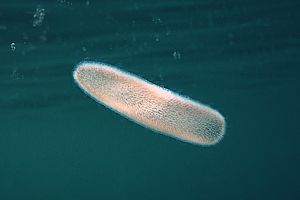Time at Sea
 Hi I am back, in a darker mood, after having circled this buoy for quite some time waiting for the weather front to change. In the meanwhile, Rafe was in charge of this site and he is rather, well, I hate to say it, silly. I was able to send him a message about the sonnet, because I feel that my time is limited and I have to get on with the work that I was tasked to do by my salp nation, which is to ask, why is it so warm? and, Make it stop, please.
Hi I am back, in a darker mood, after having circled this buoy for quite some time waiting for the weather front to change. In the meanwhile, Rafe was in charge of this site and he is rather, well, I hate to say it, silly. I was able to send him a message about the sonnet, because I feel that my time is limited and I have to get on with the work that I was tasked to do by my salp nation, which is to ask, why is it so warm? and, Make it stop, please."On a more positive note, it has been discovered that krill have a life span of several years as opposed to one, like the salp."
- Ecology of the Antarctic krill, Euphausia superba, C. Mattison.






